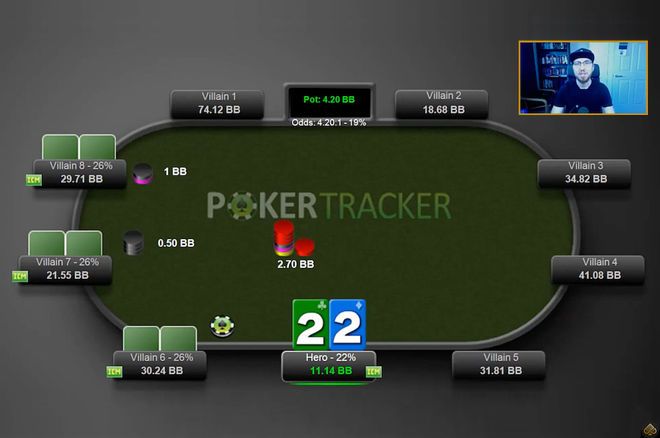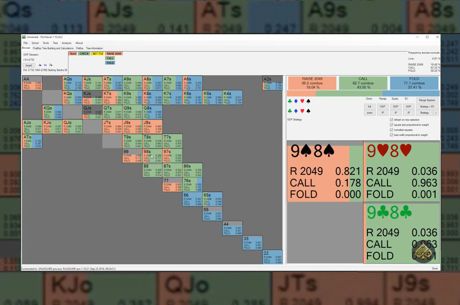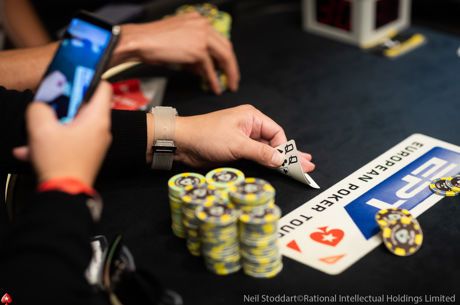How Push-Fold Strategy Changes in Bounty Tournaments

You hear a lot about "push-fold" strategy when short-stacked in poker tournaments �� that is, when you've reached a kind of "danger zone" with your chip stack at which you haven't any room for postflop maneuvering and must decide preflop whether to go all in or to fold and wait for a better spot to try to earn that double-up.
In such situations your decision whether to push or fold generally comes down your starting hand strength, your position and how many players are left to act, the remaining players' stack sizes and whether you might have enough "fold equity" to get others to concede the pot to you without a showdown, among other factors.
If the tournament is a "bounty" or "knockout" tournament in which players earn cash for eliminating others, that adds still another wrinkle that can affect your decision. That is to say, in bounty events you want also to consider that others might be a little more eager to go after your bounty should you push your short stack in the middle.
Poker coach Gareth James of MTT Poker School considers this question in a new strategy video explaining why your shoving ranges need to change in a bounty tournament compared to a regular tournament.
For his example, James uses a bounty tournament hand in which the table has folded to a player in the cutoff with 2?2? who has to decide whether to push or fold. In this particular spot about half the field still remains in a 1,300-entry tournament, meaning they aren't in the "money" yet (i.e., the regular prize pool) and ICM considerations don't come into play.
James begins by explaining that in a regular tournament this is a straightforward shove, but things might change in a bounty tournament. He shows how in a regular tournament the chip-EV Nash shoving range for the spot clearly shows 2-2 is a profitable jam here. He also takes a quick look at what other hands Hero can shove.
Then he looks at the same spot in a bounty tournament to compare the suggested shoving ranges. Here 2-2 is still a profitable shove, but the overall shoving range gets tighter. James explains why this is �� including how fold equity goes down in a bounty tournament �� and what effect that difference has on the construction of the shoving range.
Finally he looks at what happens when Hero has three bounties on his head such as in a "progressive knockout" bounty tournament. In this case 2-2 (along with some suited connectors and suited gappers) actually drop out of Hero's shoving range. Again, James explains why this is happening and what kinds of hands to shove instead.
Take a look:
The main takeaway �� realize when there's a bounty (or multiple bounties) on your head, that gives opponents extra incentive to call your all-in shoves and thus in turn lessens your fold equity and should be considered when making those push-fold decisions.
Gareth James coaches at MTT Poker School and is the co-author with Dr. Tricia Cardner of Purposeful Practice for Poker.









